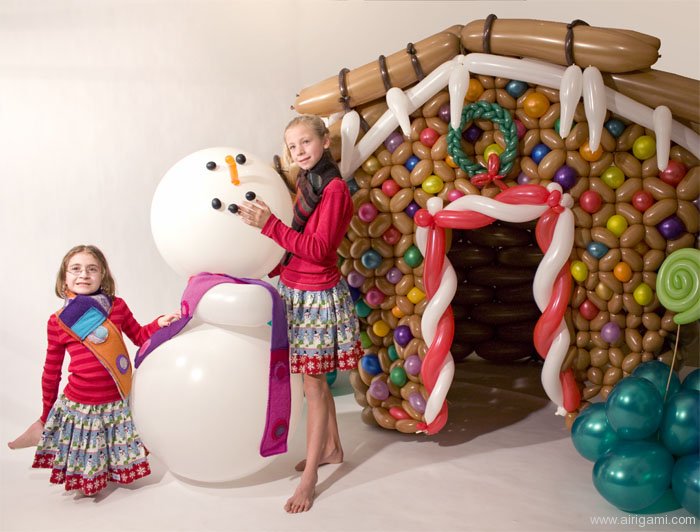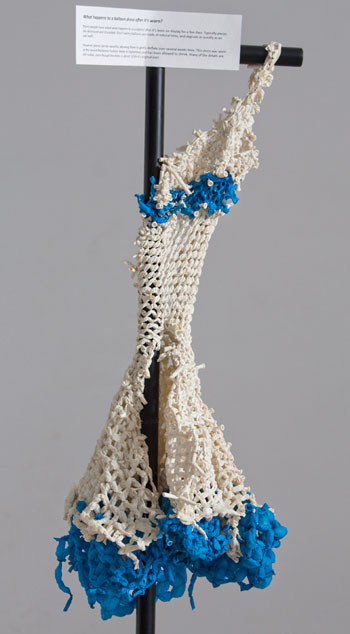Transient art
People keep asking me why I don't get upset that the large pieces I make are so short-lived. I don't understand why this question is so common with my work, and I wonder if those who create ice or sand sculpture get this query as often as I do. I suppose one difference is that sand castles and ice sculptures can be preserved under the right conditions. The basic materials for those -- water and sand -- aren't going to break down. Latex balloons, however, simply have a limited life.
Tibetan mandala sandpainting is a particularly interesting form of transient art, and one I think of frequently when the question arises on the longevity of my sculptures. The Tibetan monks create sandpaintings specifically as a metaphor for impermanence. They spend several days constructing it and destroy it shortly after completion. This is a practice that's been going on for many more years than art with balloons has existed.
I can apply a substance to the inside of balloons (HiFloat is a commercial product that's available to balloon artists), and protectants similar to those used on automobile rubber and vinyl can coat the outside of balloons to prevent them from decomposing. Unfortunately, applying these to the vast number of balloons in a sculpture is anything but trivial, requiring an inordinate amount of time.
An alternative approach to preserving balloons is the one I've been working on for the last couple of years: using balloons as my creative medium for illustration. The final piece is a flat image that's completely different from anything else that exists in any other form. In this case, it's not the sculpture that's meant to last, but a derivative of the sculpture. But, and this is important, just because I have the ability to make my artwork last, am I being true to the medium? Or have I completely changed what my medium is?
I'm constantly reevaluating what I mean when I refer to "my art". Is it the physical sculpture I've created? Is it the flat print I've created to hang on a wall? Is it the piece as it's remembered by my audience? My focus lately has been on those framed pieces that last forever, but that's an entirely different piece of art than the physical, 3D latex-and-air sculptures that I built with my hands.

To me, art is something that needs to be experienced. It needs to generate an emotional response. It's not about a lasting, physical entity, but about what the individual viewer takes away from the experience.
No matter the medium, the audience takes away a memory. That memory can last a lifetime and I find it to be more powerful than any piece I can create. Each person remembers things differently, and incredible interactions can follow as the piece is discussed further. Therefore, my balloon pieces do last forever, or at least as long as the audience does. It just doesn't last in a physical form, and that may actually be better! If the physical piece lasts, a viewer can be told his memory is incorrect. He's forced to keep his memory in sync with reality, rather than let his imagination run wild.
I will use HiFloat when appropriate and practical, such as extending the life of a sculpture for the length of certain shows. I'll continue to create flat art based on my balloon creations so that people can enjoy them in books and on their walls. But I actually like the fact that my sculptures don't last forever. It's more fun to hear other people describe what they saw in my artwork. Frequently, it's not what I remember, but who's to say my memory is the correct one?
